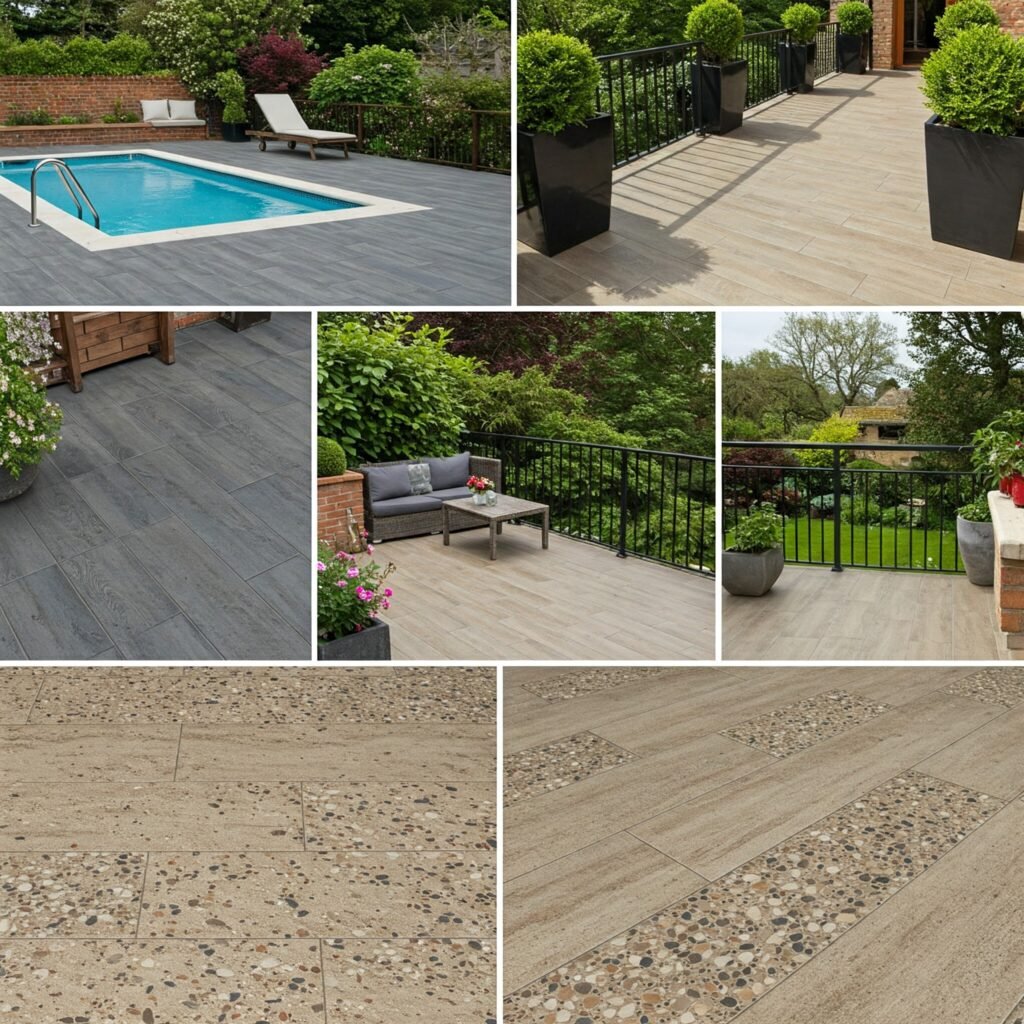Outdoor vinyl flooring has revolutionized exterior design by offering a perfect blend of durability, style, and affordability. Unlike traditional materials like wood or concrete, it withstands harsh weather while maintaining its aesthetic appeal.
This comprehensive guide explores why outdoor vinyl flooring is an excellent choice for patios, decks, pool areas, and more. We’ll discuss its advantages, installation tips, maintenance, and comparisons with other materials. By the end, you’ll understand why it’s becoming the top choice for homeowners.
What Makes Outdoor Vinyl Flooring Unique?
Outdoor vinyl flooring is a synthetic, multi-layered material designed specifically for exterior use. Its construction typically includes:
- Wear layer: A transparent protective coating that resists scratches and UV rays
- Decorative layer: High-resolution photographic designs that mimic wood, stone, or tile
- Core layer: A waterproof rigid core (usually WPC or SPC) that provides stability
- Backing layer: An attached underlayment for cushioning and sound absorption
The material’s versatility allows it to be used in various climates, from freezing winters to scorching summers. Unlike natural materials, it won’t warp in humidity or fade under constant sunlight when properly manufactured.
Recent advancements in digital printing technology have made modern outdoor vinyl flooring nearly indistinguishable from the natural materials it mimics. Homeowners can now enjoy the look of teak decking or slate tiles without the associated maintenance headaches.

Top Advantages of Outdoor Vinyl Flooring
A. Exceptional Durability
Outdoor vinyl flooring outperforms traditional materials in several key ways:
- Moisture resistance: Completely impervious to water damage
- Temperature tolerance: Stable in temperatures ranging from -20°F to 140°F
- Impact resistance: Can withstand heavy patio furniture without denting
- UV stability: High-quality options resist fading for 10+ years
A 2023 study by the Outdoor Flooring Association found that vinyl options maintained structural integrity 37% longer than wood composites in accelerated weathering tests.
B. Low Maintenance Requirements
The cleaning routine for outdoor vinyl flooring couldn’t be simpler:
- Weekly sweeping with a soft-bristle broom
- Monthly rinsing with a garden hose
- Spot cleaning spills with mild detergent
- Annual deep cleaning with a vinyl-safe cleaner
Compare this to wood decking that requires annual sanding and sealing, or stone that needs periodic re-grouting.
C. Slip-Resistant Safety
Leading manufacturers now incorporate advanced traction technologies:
- Embossed textures that replicate natural material surfaces
- Anti-slip additives in the wear layer
- Drainage channels in certain tile designs
The National Safety Council rates quality outdoor vinyl flooring as a “Class A” slip-resistant surface when wet.
D. Easy and Quick Installation
Most modern systems use one of three installation methods:
- Click-lock planks (floating floor system)
- Peel-and-stick tiles (adhesive-backed)
- Loose-lay planks (weighted installation)
A 200 sq.ft. patio can typically be installed in 4-6 hours by DIYers, compared to 2-3 days for traditional tile.
E. Budget-Friendly Alternative
Cost comparison per sq.ft. installed:
Material | Cost Range |
Outdoor Vinyl | 3− 3−8 |
Composite Decking | 8− 8−15 |
Natural Stone | 15− 15−30 |
Hardwood Decking | 10− 10−25 |
The average homeowner saves 40-60% compared to premium alternatives while achieving similar aesthetics.
F. Comfort Underfoot
Vinyl’s inherent properties provide unique comfort advantages:
- Thermal regulation: Remains 20-30% cooler than stone/pavers in summer
- Shock absorption: 15% better impact absorption than wood
- Sound dampening: Reduces footstep noise by up to 50% compared to tile
G. Eco-Friendly Options
Sustainable choices now available:
- Recycled content (up to 30% post-consumer materials)
- Phthalate-free formulations
- 100% recyclable end-of-life programs
Several manufacturers have achieved FloorScore® indoor air quality certification for their outdoor products.
Best Applications for Outdoor Vinyl Flooring
A. Patios and Decks
Case Study: The Henderson family in Arizona replaced their sun-damaged wood deck with wood-look vinyl planks. After 3 years:
- Zero warping or fading despite 110°F summers
- 75% reduction in maintenance time
- Increased home value by \$12,000 (appraisal comparison)
B. Pool Decks
Technical Considerations:
- Look for “cool surface” technology to prevent overheating
- Ensure proper slope (1/4″ per foot) for drainage
- Choose lighter colors to minimize heat absorption
C. Rooftop Terraces
Structural Advantages:
- Weighs 50-70% less than tile installations
- Doesn’t require structural reinforcement
- Protects underlying roofing materials
D. Outdoor Kitchens
Performance Features:
- Grease-resistant surfaces
- Heat-tolerant near grills (up to 300°F for most brands)
- Stain-proof against common food spills
E. Commercial Applications
Growing adoption in:
- Restaurant patios
- Hotel pool areas
- Retail storefronts
